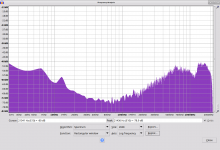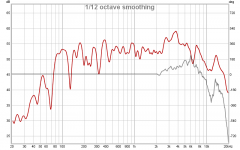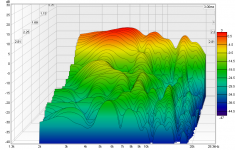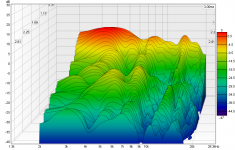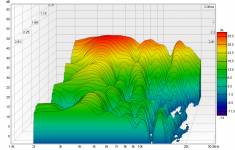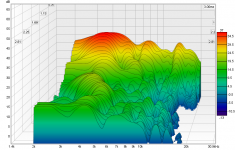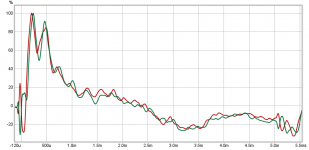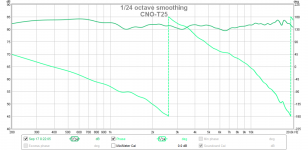Well then we have a perception issue, and a cop out, respectively. Maybe have a bit more respect for your fellow man?
Say what you will, but I'm utterly disappointed by your response above belittling Richard.
Wow. You make a habit of making false accusations. I was responding to PMA's post. Anything else is in your head
The dogs are called off. Obviously I found the comment out of line, but this is probably another moment where cooler heads should have ruled. Apologies to that end.
Since we're long past the 30 minute mark, I'll simply state I wish I could rewrite it as, "Given the context, that reads incredibly callous and untowards your fellow man; hopefully you did not mean it that way".
Since we're long past the 30 minute mark, I'll simply state I wish I could rewrite it as, "Given the context, that reads incredibly callous and untowards your fellow man; hopefully you did not mean it that way".
Is compressed air useful for judging microphone response? I have a pressure can and am experimenting. The response shown corroborates the overall trend in other measurements. Everything under 1KHz is probably wind noise.
Can I assume the noise rises with frequency and that the leveled off portion of the response is the roll off of the microphone? Or is this all just futile?
Can I assume the noise rises with frequency and that the leveled off portion of the response is the roll off of the microphone? Or is this all just futile?
Attachments
I do have a taser... Might be too loud.
Which part. The spark of the taser, or the person you're tasing?
Can somebody scream in doublets?
Jn
Ps. Can anybody point me to a block diagram of a xenyx x2222usb mixing rack? I've had difficulty finding it.. Ordered it and an 8 xlr to xlr snake.. It was quite fun learning a mix board as I was setting up..
Kinda like learning how to fold a parachute during free fall.. Hey, ""let's see what this button does""😀😀
Last edited:
JN,
You want to unfold the parachute while falling. Just a tip in case you are ever in that situation.
A taser uses more than a single spark so it is not useful as a signal source. And a tip for you, never keep it in your back pocket.
You want to unfold the parachute while falling. Just a tip in case you are ever in that situation.
A taser uses more than a single spark so it is not useful as a signal source. And a tip for you, never keep it in your back pocket.
I will keep that in mind..😀JN,
You want to unfold the parachute while falling. Just a tip in case you are ever in that situation.
I will defer to your experience..😱😱A taser uses more than a single spark so it is not useful as a signal source. And a tip for you, never keep it in your back pocket.
Can I assume you butt dialed a taser??
Jn
There are Ebay and net sites that have Behringer schematic collections but you will have to pay.Ps. Can anybody point me to a block diagram of a xenyx x2222usb mixing rack? I've had difficulty finding it.. Ordered it and an 8 xlr to xlr snake..
What do you need to know....ie mixer block diagrams are pretty much self explanatory.
Weclome to part of my world..It was quite fun learning a mix board as I was setting up..,
Dan.
In case anyone was curious. I am doing this for the B652-air speakers I got for Christmas (funny how that works).
Brown is stock, blue is with the tweeter reversed, a cardboard brace inside the box and stuffing added. I don't think the stuffing really did what I had wanted it to.
The ones I got had the tweeter wires already reversed compared to this review:
Dayton B652 AIR Review
But my FR results seem to match his after swapping leads, so maybe the factory sometimes puts the magnets in backwards?
When using the sparker as a calibration source, the 11kHz null in the calibration curve is very deep and doesn't result in sensible output, so I stayed with the compressed air method.
Brown is stock, blue is with the tweeter reversed, a cardboard brace inside the box and stuffing added. I don't think the stuffing really did what I had wanted it to.
The ones I got had the tweeter wires already reversed compared to this review:
Dayton B652 AIR Review
But my FR results seem to match his after swapping leads, so maybe the factory sometimes puts the magnets in backwards?
When using the sparker as a calibration source, the 11kHz null in the calibration curve is very deep and doesn't result in sensible output, so I stayed with the compressed air method.
Attachments
What is the measurement distance, and did you try some windowing of the impulse response? Or change vertical microphone position?
Pretty impossible to do, the magnet assembly is magnetised after completed driver assembly.....But my FR results seem to match his after swapping leads, so maybe the factory sometimes puts the magnets in backwards?....
However, different factories, different magnetisers, different VC winding direction could cause effective polarity flip.
The question is what is the factory QC......ie can cheap driver polarity markings be trusted ??.
Dan.
Here are the waterfall plots. First is stock, second is mod. I expected to see more difference than this with the inverted tweeter.
I suppose they may have intentionally reversed the magnetization on the woofer to make the suspension play nicer with the BL curve?
Distance from the speaker is about 1.5 meters. I got the calibration curve by running the compressed air recording through a lowpass filter and removing the portion obscured by noise. (But these plots aren't using calibration as I don't get phase from recording noise)
I suppose they may have intentionally reversed the magnetization on the woofer to make the suspension play nicer with the BL curve?
Distance from the speaker is about 1.5 meters. I got the calibration curve by running the compressed air recording through a lowpass filter and removing the portion obscured by noise. (But these plots aren't using calibration as I don't get phase from recording noise)
Attachments
You are measuring room reflections, not the speaker FR. You should measure near field response of the woofer and gated (windowed) response from 1,5m and merge both at some 300Hz. You should make 2 channel measurement to be able to eliminate delay and get proper phase response.
Ps. Can anybody point me to a block diagram of a xenyx x2222usb mixing rack? I've had difficulty finding it
Kinda like learning how to fold a parachute during free fall.. Hey, ""let's see what this button does""😀😀
There is a block diagram for the FX (1st link, page 3). It maybe the same architecture with the USB
The 4th link is a Quick Start Guide for the USB
https://www.fullcompass.com/common/files/7843-XENYX2222FXSpecificationSheet.pdf
http://www.giantsound.hu/files/1622_1832_2222_2442_fx.pdf
https://media.music-group.com/media/PLM/data/docs/P0A0M/X1622USB_X1832USB_X2222USB_X2442USB_M_EN.pdf
https://www.parts-express.com/pedocs/more-info/248-6608-behringer-xenyx-x2222usb--41356.pdf
Have fun 🙂
George
That chart is 3ms, which is 1 meter at the speed of sound. I don't think there are any reflections before 3mS. Except my head. I removed my head and tried again.
OK, I was just surprised, because 3ms window gives me the result as attached, on my speaker, at about 1m. BTW, 3ms means it is useful only above 300Hz, below it must be near-field measurement, in room.
Attachments
- Status
- Not open for further replies.
- Home
- Member Areas
- The Lounge
- John Curl's Blowtorch preamplifier part III
